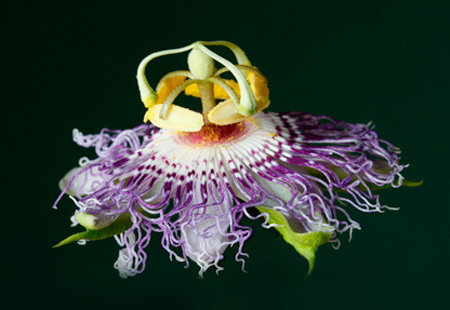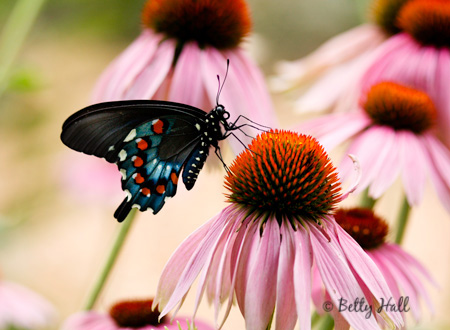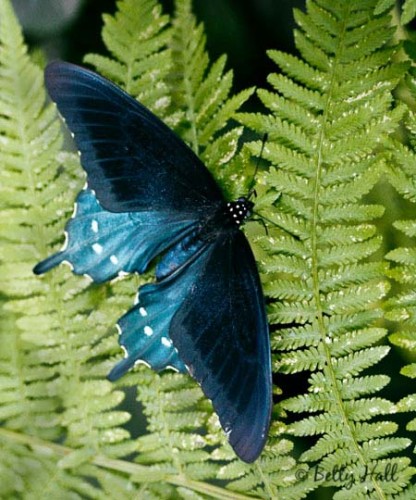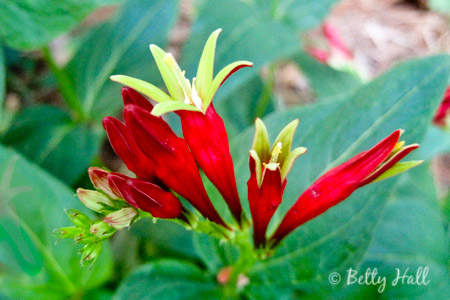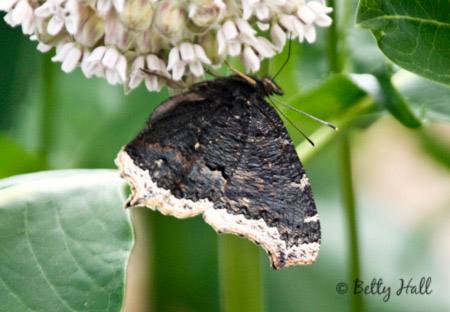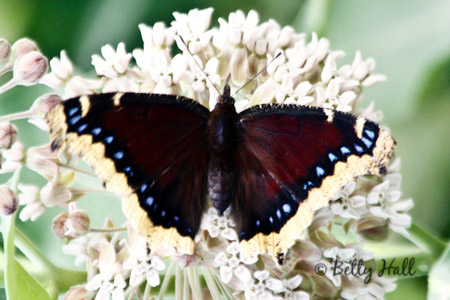This intricate blossom reminds me of a dancer with a beautifully woven skirt. It’s a passion flower (Passiflora incarnata), a native Kentucky vine now blooming in the backyard. I find it to be quite exotic and another example of the amazing designs found in nature.
Blog
Pipevine swallowtail butterfly
I found butterfly eggs on my native pipevine (Aristolochia tomentosa) and brought them inside. I’ve enjoyed watching the caterpillars hatch, grow, and make chrysalises. This past weekend, six weeks later, the butterflies emerged and are now flying in and out of the backyard.
Beautiful pipevine swallowtail butterfly (Battus philenor) on native purple coneflowers (Echinacea purpurea) – what a delight!
Here’s a different view of the the same butterfly on native Lady Fern (Athrium felix-femina). In the right light the iridescent blue is breathtaking.
A different backyard visitor
We had the privilege of keeping our neighbors’ puppy, Reesie, over the weekend. She is an eight-week-old puggle, a cross between a pug and a beagle.
Between daytime naps, Reesie explored the backyard and enjoyed chewing on leaves, bark and pine cones. She also tolerated being held, petted, and photographed. It was a special treat to have our daughter, Janet, in town to share the fun.
This is a bit of a switch from my usual native plants or butterfly blog posts, but Reesie was the highlight of the backyard this weekend. She was a delightful, entertaining house guest.
Indian Pink
Indian Pink (Spigelia marilandica) has become one of my favorite native Kentucky wildflowers. I added it to my shade garden last summer. The bright red, yellow-tipped blooms in late May and early June are quite dramatic.
And the attractive, dark green foliage will add texture to the shade garden throughout the summer.
Indian Pink is a beautiful plant that does well in dry shade, is about 18″ tall, and is not invasive. It definitely meets my criteria for a favorite native wildflower.
Mourning Cloak butterfly
It was a delightful surprise last week to discover two Mourning cloak butterflies (Nymphalis antiopa) feeding on my common milkweed blossoms. I was happy they stayed long enough for me to get my camera.
One soon flew away, but the other allowed me to get good views of the under and upper sides of its wings. I can see how the upper side could resemble a traditional cloak that was worn when one was “in mourning,” hence the name.
I find it interesting that while most adult butterflies live two to three weeks, Mourning cloaks live for about ten months. They emerge in summer, overwinter in woodpiles or under bark, then mate and lay eggs in early spring. Since their wings were in such good condition, I’m guessing my visitors were born this year.
According to what I read, Mourning cloaks are common though not abundant throughout North America. I have seen them twice before – once in Glacier National Park and once in Tennessee. I’m glad to add them to my list of backyard butterflies.

